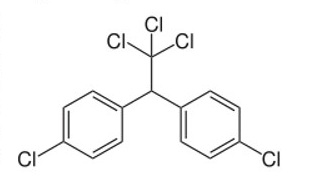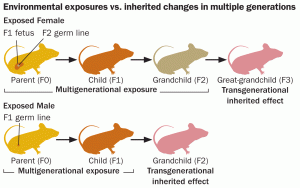SHOULD WE USE THE PESTICIDE DDT TO COMBAT MALARIA?
By Holly Goodrick
DDT, or dichlorodiphenyltrichloroethane, is an incredibly powerful insecticide that was used to fight malaria among troops during World War II and was later used as an agricultural pesticide. In 1948 Paul Hermann Muller even received a Nobel Prize for discovering how effective DDT was in killing insects. However, by 1962 it became clear that DDT was detrimental to the environment and humans. The United States and almost all other developed countries have consequently banned the use of DDT but in Africa and some parts of Asia the use of DDT has increased due to it being an effective method of combating malaria by killing the insects that carry the disease.
Despite the insecticide’s impacts on the environment and human health, the World Health Organisation (WHO) has promoted the use of DDT since 2006 as it sees the pesticide as a necessary measure to prevent malaria. It has encouraged the Indoor Residual Spraying (IRS) of DDT, which involves coating indoor surfaces with it. DDT has been used for IRS for almost six decades and in this time it has been estimated that it has saved 500 million lives, a huge accomplishment. The key to the insecticide’s success is that it has more than one mode of action: it repels, irritates and kills mosquitoes. Malaria is a horrifying disease that kills 300-600 million people per year so should we use DDT to fight malaria in spite of its harmfulness to the environment?
Scientists first became aware of the effects of DDT following the publishing of the book ‘Silent Spring’ by Rachel Carson, in which she writes about the consequences of overusing DDT and uses the image of all the birds in the forest dying so that Spring sounds silent without the birdsong that there once was. She writes that, “On the mornings that had once throbbed with the dawn chorus of robins… and scores of other bird voices there was now no sound; only silence.” Although her book wasn’t particularly scientifically accurate, it did raise the concern of the public enough for scientists to look into it. They found that DDT was thinning the eggs of bald eagles, killing the embryos, leading to a reduction in the bald eagle population to 500 pairs in America. Since the ban on DDT the population has increased tenfold. Furthermore, DDT has a long half-life of 2-15 years (depending on the soil type), meaning that it remains in the soil for years and slowly breaks down to DDE and DDD, which are equally as harmful. These products don’t dissolve easily in water so little goes into the groundwater but they stay in the soil and build up in plants and in the fatty tissue of birds and animals. Even now the effects of DDT persist: in Michigan, soil is contaminated by DDT in the area of Vesicol Chemical Corp., a building which produced pesticides until 1963. This has led to birds being poisoned by eating worms living in the contaminated soil. On average the birds’ brains contained DDE in the concentration of 552 parts per million, where only 30 parts per million is enough to cause death. Civilians must replace the top 6 inches of soil to remove most of the pesticide.
However, it’s not only the environmental impacts of the pesticide that are worrying. There are also implications for human health. In large concentrations, DDT leads to neurological diseases, cancer and reduced fertility and sperm count. IRS to kill mosquitoes uses high volumes of the pesticide and this leads to high exposure levels. DDT also damages the epigenome, which controls gene expression, leading to obesity, ovary and kidney disease, which can be inherited. An experiment with rats showed that when the rats were exposed to high DDT levels, their offspring (the F1 generation) developed obesity, kidney disease, ovary disease and cancer tumours as adults. Amongst the great-grandchildren of the original rats (the F3 generation) 50% of the rats developed obesity due to transmission of the epimutations through the sperm and eggs.
The fact that the descendants of those benefiting from DDT, through using it as malaria vector control, will suffer from diseases as a result of it, raises more ethical questions about whether we should still use the insecticide. For example, even though members of future generations will suffer harmful effects from DDT through intergenerational inheritance of epimutations, they cannot have a say in whether it should be used as they do not yet exist. They will have no control over the use of DDT, which harms their wellbeing, and will receive no benefits from the current use of it. On the other hand, these members of future generations might not even exist if those of the current generation are killed by malaria. These complex ethical dilemmas must be considered when discussing whether the pesticide should be used.
The obvious solution would be to use an alternative way to prevent malaria. For example, organochlorine pesticides have shorter half-lives so persist in the environment for less time and consequently are less harmful. On the other hand, these don’t compare to DDT’s efficiency: when South Africa replaced DDT with alternative chemicals, the number of deaths from malaria suddenly increased from 22 to 320 per year and cases of malaria increased from 8,500 to 42,000. The reintroduction of DDT then reversed this. This shows that even though there are other ways to combat malaria, they are often not as effective.
In conclusion, DDT is a hugely efficient pesticide and its success in fighting malaria over the last 60 years has been staggering. Nevertheless the devastating effects of the insecticide on the environment and humans, including the ability to affect future generations, cannot be ignored. If we can, we must find alternatives to DDT to prevent malaria that do not cause so much damage.



